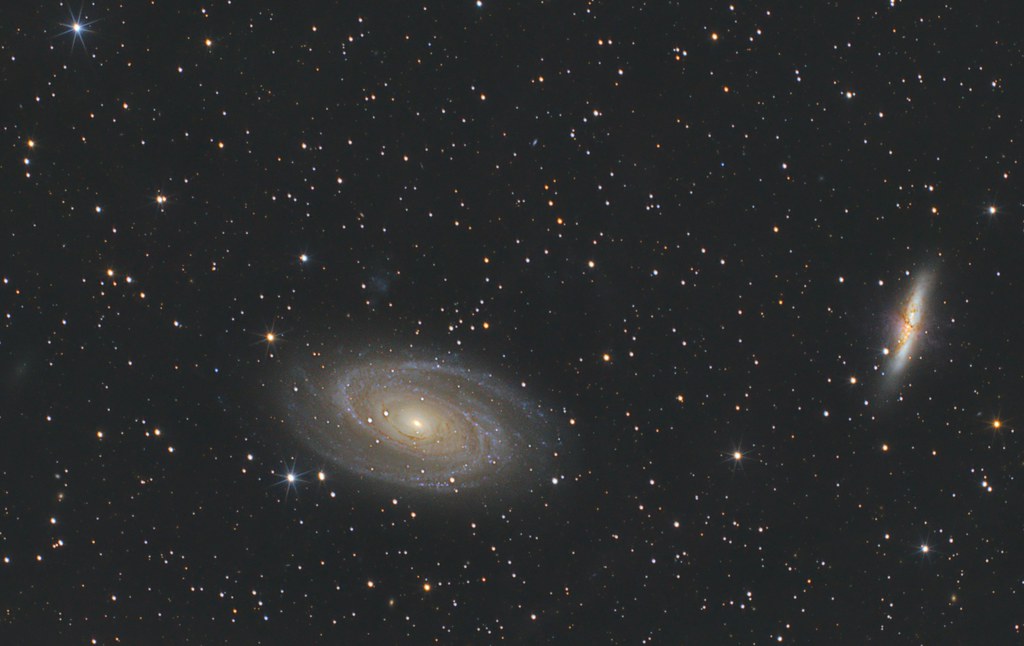M81 and M82 – introduction
M81 together with M82 is probably one of the most popular galaxies both visually and as imaging object. Everyone starting out with this hobby will have a go at these galaxies in Ursa Major and rightfully so I would say. They are big, lot’s of detail and easy to find. For most camera’s the two galaxies form a very nice composition and field-of-view.
This fov has more to offer than just the galaxies however; there is a lot of integrated flux nebula (IFN) around and between M81 and M82. This makes this object also a very suitable target for really dark skies and longer exposures, to try and capture this IFN.
So when I was on the astrotrip to dark skies in April, I wanted to have another go at M81 and M82 with my new D600 on the newton, along with the Nikkor 80-200 attached to the D5100 for a widefield of this IFN.
M81 and M82 – the result
I started with my default exposure time of 5 minutes per frame. Mostly because more frames means better noise reduction due to better pixel rejection, especially when using dithering. Furthermore we had some clouds passing by, so dismissing 1 frame would have less impact with the 5 minutes exposure. However, I did also try out 8 minute exposure and I must say that this seems to make quite a bit of a difference for capturing the IFN. I was only able to take 10 frames of 8 minutes, but this stack showed more IFN than 16 x 5 min. (will dedicate a separate article to exposure times with a DSLR in the future).
I acquired 47 frames during the weekend, 37x5min and 10x8min. I combined this with the 18x5min frames I had taken earlier on my regular imaging location (see resulting image here: M81M82), close to home. So in total this image has 55x5min and 10x8min = 355minutes of exposure time, which is a new record for me in terms of time spent on a single object 😉
However, even with almost 6 hours of exposure time I didn’t capture the IFN good enough to have it stand out from the background. It’s definitely there when I stretch the image really hard, but not enough to be visible in the end result.
So I will spent more time on this in the future, probably with longer exposure times.
Details
Date: March and April 2015
Location: Ammeloe – Germany, Hohen Woos – Germany
Optics: Newton 8″ F5
Mount: NEQ6
Camera: Unmodified Nikon D600 used at ISO800
Guiding: Lacerta MGEN
Exposure: 55x5min and 10x8min, total 355min.

